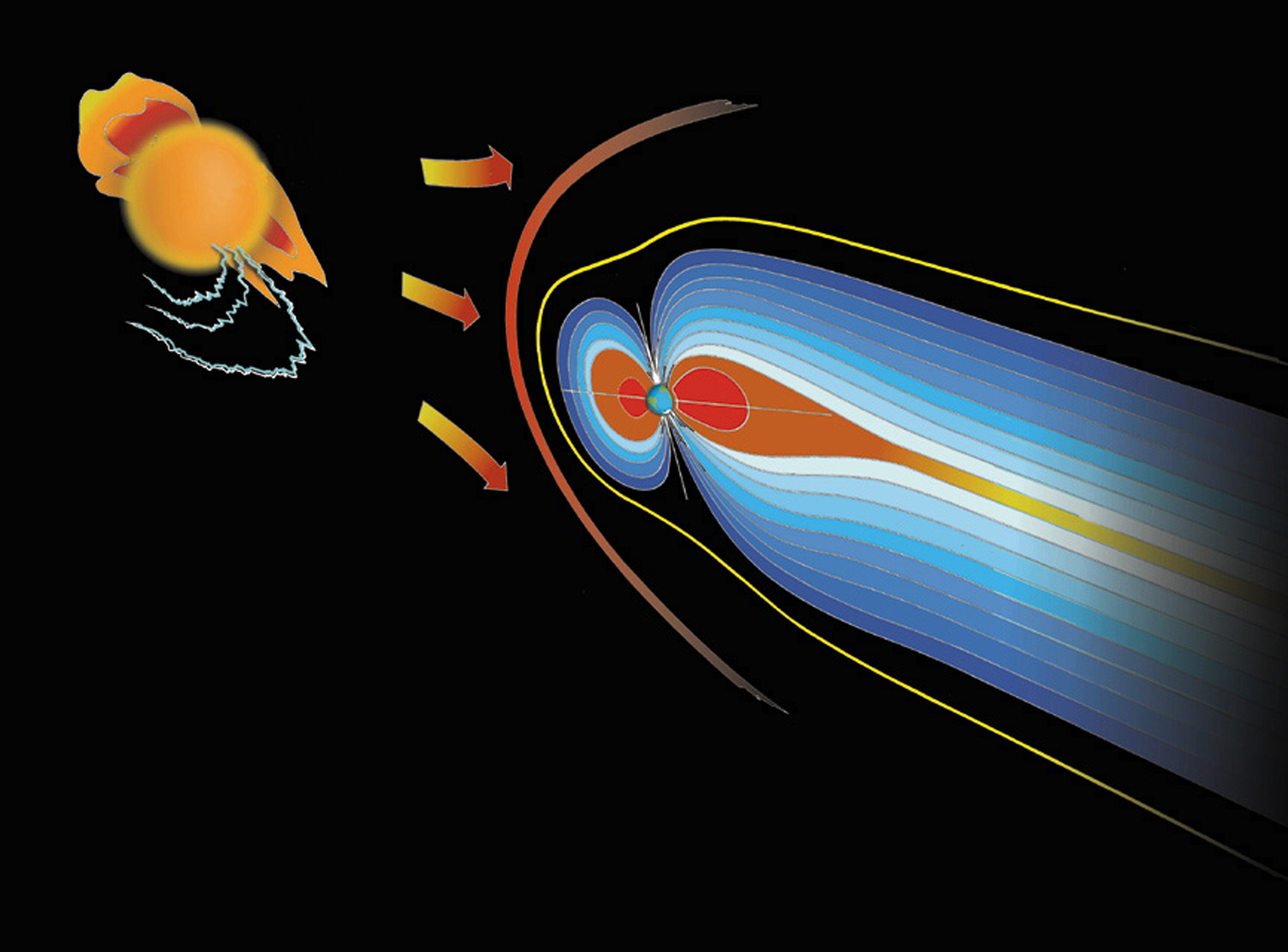
The wind on Earth is always changing: sometimes it's gentle, other times it can be very strong. In the same way, the Sun's wind varies a lot as well. In the section "Blowing in the Wind" you were told about two types of solar wind: fast and slow.
Knowing what conditions are like out in space is important these days with so many spacecraft in use. When we study these conditions we say we are studying space-weather.

Maybe one day that could be me, only with a map of the solar system rather one of Europe. I wonder if the BBC has any jobs for a space-meteorologist!
Meanwhile, back in space....
Most of the time the wind hitting Earth is slow (a mere 1,500,000 km/h!), but sometimes patches of fast wind at twice that speed can hit us as well. Space-weathermen call these storms, because they can cause aurorae.
The different types of solar wind (fast and slow) come from different parts of the Sun's surface. Because the Sun spins round every 27 days, the same patches of fast wind will hit the Earth every 27 days as well, and so these storms are also called periodic storms.

This illustration shows the Sun, with a CME being ejected and heading towards the Earths, which is protected by a special layer. See how the Earth's magnetic field is distorted. Courtesy of the British Antarctic Survey
A different type of storm (called irregular storms) also cause aurorae. These happen when matter is ejected from the Sun's surface (Mark described these in his section, they are called Coronal Mass Ejections, CMEs), and thrown out into space. If a CME hits the Earth, then we can get aurorae.
Nowadays it's possible to spot these storms before they hit Earth, and this is where I come in....

|